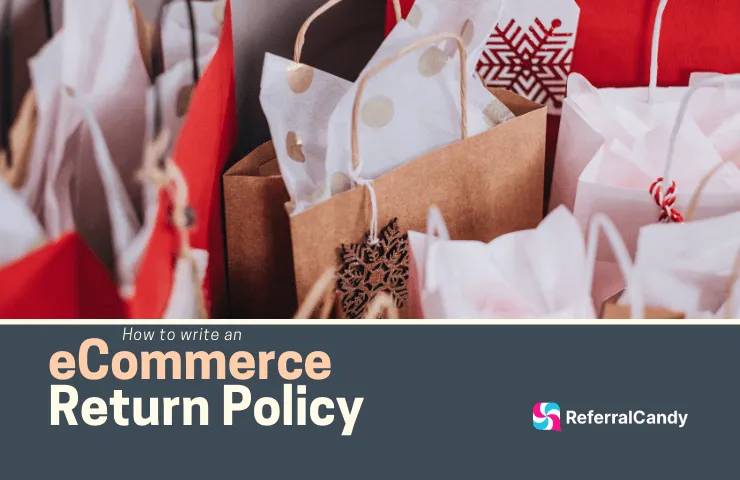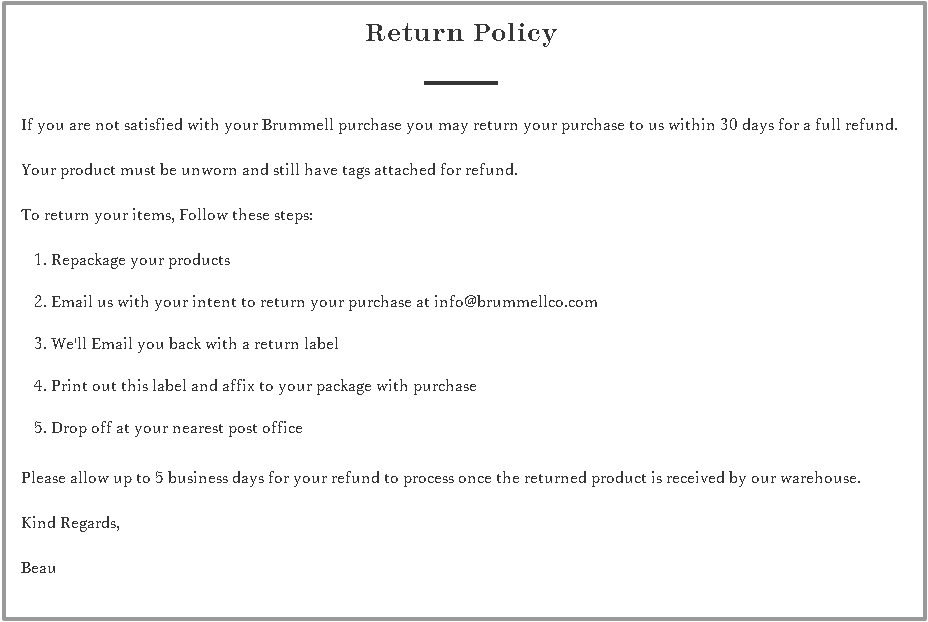
How to Implement a Return Policy that's a Win for Both You and Your Customers
Returns, refunds, and exchanges are vital parts of online business that can break or make a business. According to Statista, return deliveries in the United State alone will cost companies $550 billion by 2020. Also, nearly 41% of shoppers purchase with the intent of returning, and 1 in every 3 products purchased are returned from online stores. If you don’t have a returns policy, you may be setting up for failure.
One way to tackle returns from eating up your business is by having a sleek return process. It's also a great opportunity to keep happy customers coming back for more.
Now Let's take a detailed look into how to write a standard return policy and answer all burning questions about returns, refunds, and exchanges.
[su_box title="Apps, Agencies & Brands Discuss: Will 2020 be the strangest Black Friday/Cyber Monday season for eCommerce?" box_color="#026299" title_color="#ffffff" radius="2"]
[/su_box]
Return policies are rules set by retailers to govern how customers exchange and return unsatisfied merchandise they purchased. A return policy enlightens customers on what items can be returned, for what reasons, and the timeframe before a return becomes invalid.
Customers are used to returns simply because they can’t try on the fit of the clothes in the shop. ASOS.com even offers “product doesn’t fit” as one of their reasons for returns. Without a return policy, you may have to manually address customer issues through support, or risk getting negative customer reviews, complaints or even chargebacks.
The main benefit of a return policy is that it makes customers feel safe. It allows them to try a product before buying so they can avoid buyer’s regret.
Creating a return policy isn't the most beautiful side of running an eCommerce business, and it's even disheartening to know someone dislikes your product and demands a refund.
For these reasons, it can be tempting to sideline the reality of returns.
However, the way you manage returns can directly impact sales and boost customer loyalty; customers will certainly trust retailers with flexible return policies.
When customers are making large purchases, they use the return policy as a deciding factor to pick which retailer to patronize. And Majority of customers will buy if the return process is easy.
When a business practices a flawed return system, customers get frustrated and spread the words to others. Once this poor buying experience finds its way to the internet (social media), it negatively impacts the business reputation and drastically decreases sales.
However, survey results show that price is the leading factor of purchases on Amazon, with 82 percent of Amazon buyers listing it as an important shopping consideration (Statista, 2019). Many of them also enjoy the flexibility offered in returning products and the quick shopping time that Amazon offers
The benefits of a customer-centric return policy
Even though an easy return process won't generate income, it would lead to high customer retention and then transform into long-term revenue growth. A good buying experience will result in positive customer reviews and word-of-mouth recommendations.
A study by UPS indicates that 68% of shoppers check a website's return and exchange policy before finalizing a purchase. So, words like "free," "hassle-free," and "easy" make sense in a return and refund policy.
When writing your policy, the goal is to satisfy your customers. The difference between businesses with regular repeat purchases and those with regular one-time purchases is a customer-centric return policy.
Refunds and Exchanges are types of returns.
Since it's evident that shoppers prefer to patronize retailers with a sweet return experience, the focus remains on writing a great return and exchange policy.
A written return policy will work as a 'one size fits all' to tackle returns, refunds, and exchanges properly.
The type of eCommerce business or product you sell will determine what your policy contains. But every policy should cover the following basics:
Note: If your store is on a third-party website like amazon or eBay, you have little-to-no control of the return and refund process. You must accept the policy set by those sites, even if it can affect your sales.
Impressing your customers with a sleek return process is crucial, but not all items fit into the 'return' vertical.
A good practice is to ensure your return policy is visible to shoppers. Customers might try to return items labeled as 'final sale' if they never saw any policy.
To cut off those back-and-forth arguments with customers who might miss the policy, you should stick your return policy in hard-to-miss places. A few places to consider includes:
When a return process is apparent, customers will set the right expectation before initiating a purchase. Certainly, some customers will want refunds, but not at the expense of the business reputation.
Below is a simple template for return policies. Be sure to customize it for your store and add all relevant information, like shipping and contact details:
If for any reason, you are unsatisfied with your purchase and need a return or exchange, we will help you!
We allow free returns and refunds for purchases of less than 30 days. You can return your product for a different one, or to get a refund.
The following return and refund policies are good examples to learn from.
Why It Works: Luckyleo Dancewear start their policy with returns they don't accept. There's no way a customer will skip that. They even made it clear that shoppers are responsible for paying any shipping fee. That’s a very transparent approach.

Why it works: Rather than asking for the product back, Bean Box will send a replacement roast to satisfy unhappy customers. This is a powerful policy to win back disappointed customers.
It’s a shrewd strategy: Retaining a customer is five times cheaper than acquiring a new one. For the cost of retaining a customer and making them feel special, a single bag of replacement coffee is probably cheap!

According to a study, average retailers spend 81% of total sales on logistics. So, minimizing overall return volume is a smart way to reduce expenses. And you can achieve that by doing the following:
When shopping online, what you see might be different from what you get. So, Shoppers rely on a detailed product description to influence their purchase.
A confusing product description will not only affect the buying experience, but it would also lead to a spike in returns.
Another way to reduce returns is being lenient with return timeframe - Customers are used to 30 days as the maximum. Research shows that only 5% of customers return online orders more than 30days after purchase.
Extending the return time limit (to 60 or 90 days) will result in a lower return rate by reducing urgency around the customer's returns.
Ensuring you have good quality controls helps prevents returns in the future.
Returns and refunds don’t just cost money in terms of shipping and products. There’s also time spent liaising with your customer success team, responding to emails, and even potentially stress and negative word-of-mouth from customers.
Customers returning purchased products might face similar difficulties - it could be production, packaging, or a variety of reasons. Including a quick one-question survey with preset options will help you useful information.
Using the right tools for processing returns and exchanges will save you money and time on the shipping and fulfillment, and operations sides.
Shopify merchants enjoy shipping discounts on carriers. Shopify also allows their retailers to be in charge of returns and refunds, including generating return shipping labels for orders.
Wrapping Up
Even if you channel all your energy into creating the best products, chances are you will still witness a few unsatisfied customers ready to return or exchange items.
The way you deal with these unhappy customers will have significant impacts on your business. Having a clear return policy will not only cut costs, but it would also turn a bad customer experience into several repeat sales.
Folajomi Ballo is a Digital Marketer and content writer that helps solopreneurs and small businesses write content to boost their conversions and increase sales.
Darren is a content/SEO writer and product marketer. He doubled search traffic for the blog and put ReferralCandy on the front page of the Shopify AppStore.
Grow your sales at a ridiculously
lower CAC.